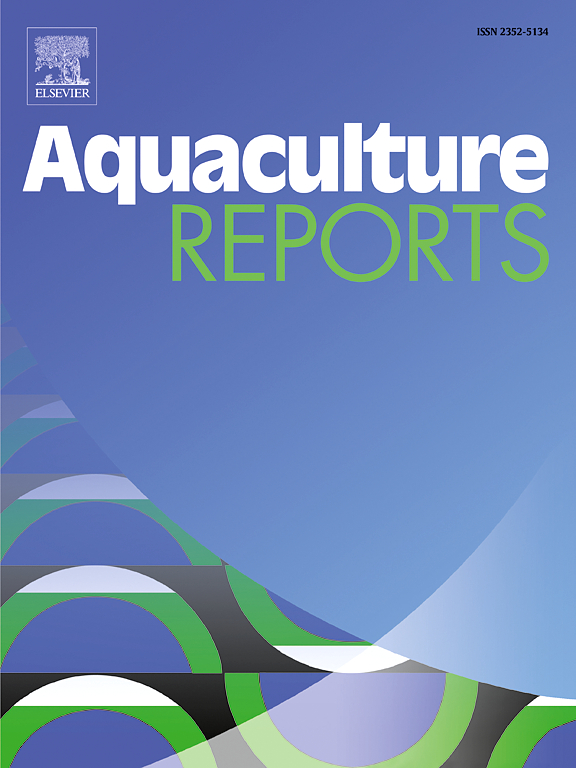Comparative transcriptomic analysis reveals genetic factors underlying susceptibility of largemouth bass to the complex stress elicited by transportation
IF 3.7
2区 农林科学
Q1 FISHERIES
引用次数: 0
Abstract
Live fish transportation is a common practice in aquaculture, but it can cause complex stress and lead to decreased immunity and mass mortality. However, the genetic mechanisms determining fish resistance to transportation stress are not well understood. In this study, largemouth bass (Micropterus salmoides) juveniles were transported by car for 4 hours, resulting in a mortality rate of 33.61 ± 10.58 % during recovery. Except for the dead ones, stress-sensitive individuals with abnormal symptoms were identified, showing significantly lower levels of glutathione and superoxide dismutase in their livers compared to normal individuals (p < 0.05). RNA sequencing of liver and spleen samples collected before transportation (T0), at the end of transportation (Te), and after 1, 3, 4 and 5 days of recovery (R1d, R3d, R4d and R5d) revealed transcriptional responses to the stress. Up-regulated genes in the liver were associated with cholesterol, sterol and steroid biosynthesis, while those in the spleen were related to hemopoiesis and immune response. Down-regulated genes in both tissues were linked to neurogenesis, angiogenesis and cell migration. Analysis of differentially expressed genes between normal and abnormal fish suggested that failure to terminate stress responses and organ function depression may contribute to stress susceptibility. Core genes associated with stress susceptibility were enriched in glycolysis. These findings shed light on the genetic factors influencing largemouth bass’s susceptibility to transportation stress.
比较转录组学分析揭示了大口黑鲈对运输引起的复杂胁迫易感性的遗传因素
活鱼运输是水产养殖中的一种常见做法,但它会造成复杂的压力,导致免疫力下降和大量死亡。然而,决定鱼类对运输胁迫抗性的遗传机制尚不清楚。本研究用汽车运输大口黑鲈幼鱼4 h,恢复期间死亡率为33.61 ± 10.58 %。除死亡病例外,发现有异常症状的应激敏感个体肝脏谷胱甘肽和超氧化物歧化酶水平明显低于正常个体(p <; 0.05)。对运输前(T0)、运输结束时(Te)和恢复后1、3、4和5天(R1d、R3d、R4d和R5d)采集的肝脏和脾脏样本进行RNA测序,揭示了对应激的转录反应。肝脏中上调的基因与胆固醇、固醇和类固醇的生物合成有关,而脾脏中上调的基因与造血和免疫反应有关。两种组织中下调的基因与神经发生、血管生成和细胞迁移有关。正常和异常鱼的差异表达基因分析表明,不能终止应激反应和器官功能抑制可能是应激易感性的原因之一。与应激敏感性相关的核心基因在糖酵解过程中富集。这些发现揭示了影响大口黑鲈对运输胁迫易感性的遗传因素。
本文章由计算机程序翻译,如有差异,请以英文原文为准。
求助全文
约1分钟内获得全文
求助全文
来源期刊

Aquaculture Reports
Agricultural and Biological Sciences-Animal Science and Zoology
CiteScore
5.90
自引率
8.10%
发文量
469
审稿时长
77 days
期刊介绍:
Aquaculture Reports will publish original research papers and reviews documenting outstanding science with a regional context and focus, answering the need for high quality information on novel species, systems and regions in emerging areas of aquaculture research and development, such as integrated multi-trophic aquaculture, urban aquaculture, ornamental, unfed aquaculture, offshore aquaculture and others. Papers having industry research as priority and encompassing product development research or current industry practice are encouraged.
 求助内容:
求助内容: 应助结果提醒方式:
应助结果提醒方式:


